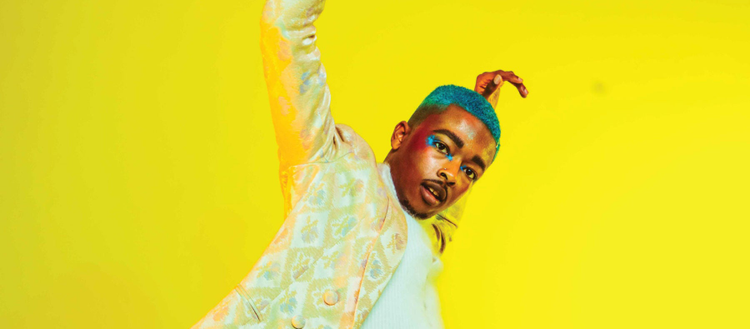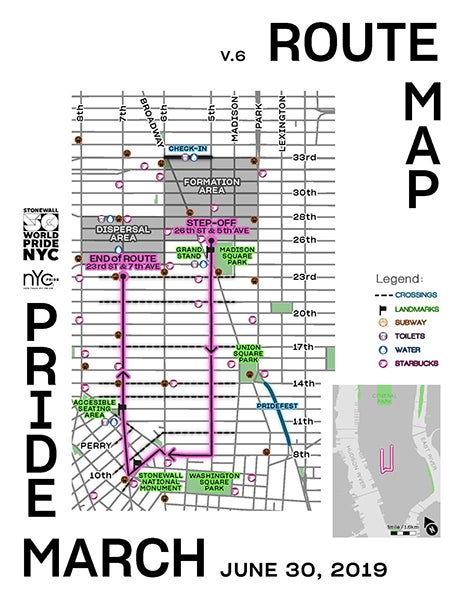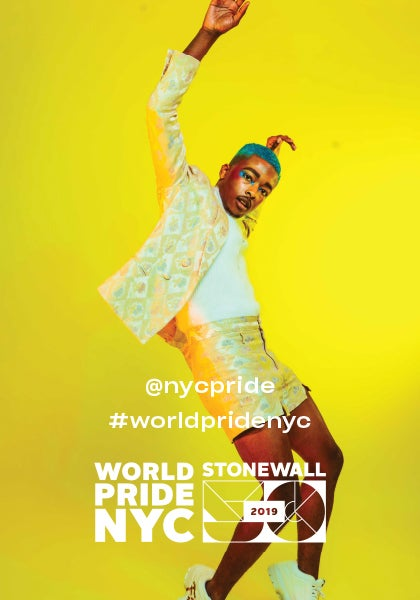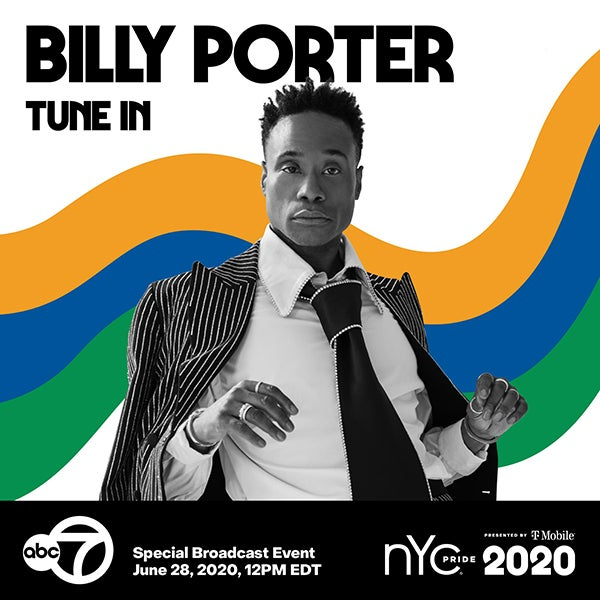Commemorating Pride Through Photography and Photoshop
Celebrate Pride digitally this year with help from Photoshop.

On June 28, 1970, the first Pride march took to the streets of New York City to commemorate the one-year anniversary of the Stonewall uprising. Fifty blocks and 50 years later, millions of people all over the world are celebrating Pride month and the freedom to be their most authentic selves.
From that first march, creativity has been an important element for the expression of Pride. “Creativity and design are such an important part of the LGBTQIA+ community because people want to cling to something that represents themselves, and if that doesn’t exist, you need to create it,” says Claudia Garib, communications coordinator for NYC Pride.
This month, we’re looking at how photography and design are used to reflect the evolution and growth of Pride as well as how it is used today by the NYC Pride team. Don’t miss our curation of Photoshop ideas and tutorials at the end of the article to help you creatively participate in 2020 digital Pride celebrations.
Fifty years of photography on Christopher Street
Suzanne Poli was on Christopher Street during the Stonewall uprising in 1969, camera in hand. “When I picked up my camera, I was feeling the fight,” she says. “I saw these groups of people passing, and I felt their passion and needed to capture it.”
Each year in the five decades since, Suzanne has captured the essence of Pride in New York City. Her unique perspective and dedication to equality are expressed in her work. “I photograph almost as though the camera were part of my body — with big passion. I’m very involved and drawn to the causes of social justice. Everyone should be able to live the life that makes them happy.”
Suzanne’s portfolio visually documents the evolution of Pride. The first photos from the ’60s and ’70s are largely in black and white and give a glimpse into marches vastly different than the ones we know today. “There are no barricades, and it’s not thousands of people,” Suzanne says. “It’s not packed. Everyone was very serious. That period was dark in a way. You talked to people, but you whispered. It was different than now. ”
Through the ’80s, ’90s, and into the new millennium, the images start to change. Color plays a bigger role. The crowds begin to grow and take on new life, shouting instead of whispering.
“Photographing Pride today is like I am dancing in the streets,” Suzanne says. “It’s very powerful to be there. It’s very jubilant, but that core passion is still there. I’m photographing people and floats, but I am really photographing something beyond that. It’s an intangible thing, something you feel more than you see.”
Color, creativity, and Pride today
In 2019, more than 5 million people came to lower Manhattan to celebrate Pride, a far cry from the small but determined crowds that Suzanne first photographed on Christopher Street.
NYC Pride is driven by powerful visuals and a staff and volunteer base that is 2,000 people strong. “We use Adobe Creative Cloud, specifically Photoshop, for so many things,” Claudia says. “From our social designs to the ads on Pride Island to the physical signage all over the city.”

The NYC Pride team uses Photoshop to create many of their materials each year, including the visual maps and guides to help visitors navigate the march route. “We love showing that information in a creative way because too many people just see the Manhattan grid. We want to put some splash on it. We want to make the map as colorful and creative as our community,” Claudia says.

Color and creativity are staples for the NYC Pride team. Each year of celebration has its own unique design, theme, and focus. The 2019 designs focused on bursts of color to celebrate how far the community has come since the 1969 demonstration. For 2020, the visual theme is starkly different, embracing black and white and using only highlights of color.

“We’re going back to the roots of what it took us to get that color that we celebrated previously,” Claudia says. “It took us a long time. It took a lot of struggling, but here we are 50 years later. Now, we have a lot of work to do if we want to be here for another 50 years.”

Celebrate Pride in new ways
For aspiring photographers who want to capture their own Pride moments, Suzanne says the most important thing is commitment to the cause — true art comes from having an emotional connection.
“There’s a big difference between grabbing the shot and actually being passionate and creating the shot. I photograph from that point of view — the desire to create change. I hope that my photos can enable the movement and continue to propel it forward,” she says.
While you may not be capturing in-person events this year, you’ll still want to capture emotion in the art you produce. Here are some ideas for how to use Photoshop to enhance your digital celebration.
- Make a collage of your favorite photos from past Pride celebrations. Learn how in this tutorial. You could also consider diving into compositing video from years past.
- Design a poster to share on social media. Get started with these tips and this video tutorial.
- Use Photoshop to place yourself in your best Pride attire into the celebration location you would have attended or into photos of celebrations from different decades.
- During this time of social distancing, use Photoshop to assemble an image of you and your friends together in your Pride gear to show our global unity.
June 27, 2020, marks the Global Pride celebrations. Members of the LGBTQIA+ community and allies will be digitally celebrating all over the world, with individual Pride teams hosting their own virtual events during the week. Join NYC Pride on June 26 for a virtual rally and on June 28 for NYC Pride broadcast event featuring living room concert performances by Janelle Monáe, Deborah Cox, Billy Porter, and more. Contribute to the conversation with the #thefutureis, and share your vision for what the future is for you.
However you choose to create and celebrate, remember that you are a part of history. Suzanne says, “Photography is important because you capture a moment. You capture a feeling, something that is very much alive, even now. When you look at photos you cannot only see a different time, but you can feel the presence of those there.”
Download Photoshop for your computer or iPad and explore Adobe’s collection of tutorials and helpful resources for getting started.
At Adobe, we believe that everyone deserves respect and equal treatment, and we also stand with the Black community against hate, intolerance and racism. We will continue to support, elevate, and amplify diverse voices through our community of employees, creatives, customers and partners. We believe Adobe has a responsibility to drive change and ensure that every individual feels a sense of belonging and inclusion. We must stand up and speak out against racial inequality and injustice. Read more about the actions we’re taking to make lasting change inside and outside of our company.
We also know many people are still impacted by the current COVID-19 crisis and our thoughts are with you. The entire Adobe team wants to thank you, our customers, and all creators around the world for the work you do to keep us inspired during this difficult time.